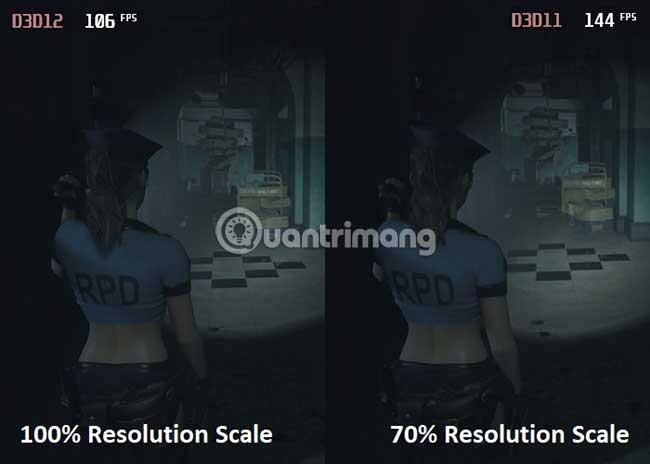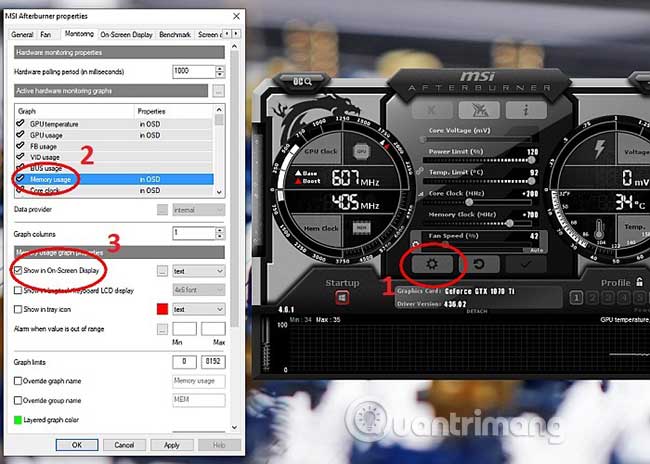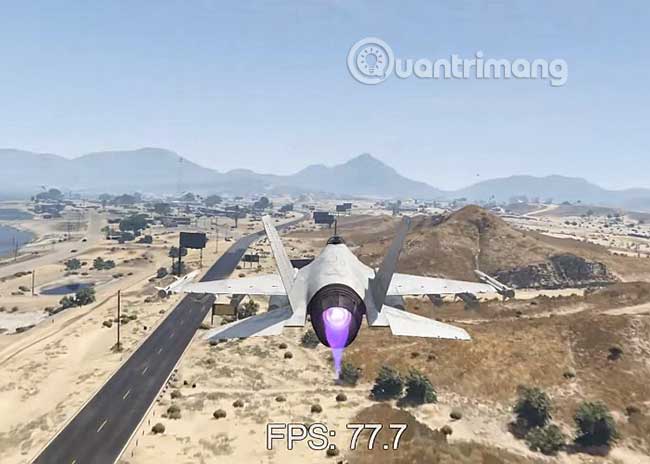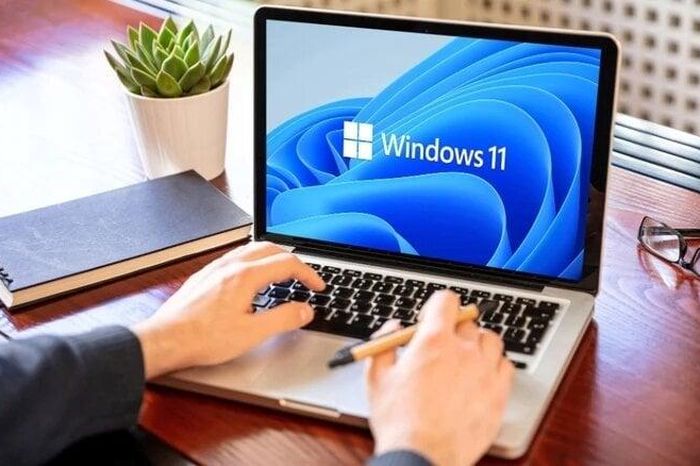How to optimize video game graphics settings
The biggest power of computer gaming lies in how the platform provides almost total control of the gaming experience. Whether you have a cheap PC paired with a 720p monitor or a powerful gaming console connected to a 4K 165Hz gaming monitor, PC games allow you to adjust your graphics settings to get Great experience on both extremes.
The good news is that you don't have to deal with a bad gaming experience, even if you lack advanced graphics cards or the most powerful processor, the only downside is the depth and complexity of the graphics settings. This customizable graphic will be uncomfortable for most people, except for really passionate gamers. On the other hand, you can also make more mistakes than improving the overall gaming experience, through setting up the graphics settings incorrectly - that doesn't bring much visual improvement either. image.
The following article is a guide for you, if you are worried whether you have made the correct changes to these settings or just wonder why the game runs at less than 30fps when placing the game at preset Ultra.
Instructions to optimize video game graphics settings
- Preset Ultra is only good for screenshots
- DX12 is not necessarily better than DX11
- Use the Resolution Scaling feature to improve performance
- Check memory usage
- Draw distance and texture transmission
Preset Ultra is only good for screenshots
It's appealing to use the Ultra graphics preset, but don't do so unless you have top-notch hardware. Even using top-class hardware doesn't guarantee the frame rate can be played in new games, if you own a 4K screen. The good news is that there's no reason to increase the graphics settings to Ultra, unless you're only interested in displaying in-game screenshots on forums.

Compare the Resident Evil 2 Remake in parallel in the Ultra and High settings. Hard to tell the difference even when comparing screenshots. Remember, the Ultra preset is for screenshots and High is for gaming.
DX12 is not necessarily better than DX11
DirectX allows game developers to program graphics and sound for Windows machines. It basically allows video game code to be able to 'communicate' with a lot of gaming hardware without any problems. DX11 is a high-level API that makes it easy for developers to work, but it does not allow them the flexibility to optimize PC hardware to the maximum. But DX12 can do it.

However, most game developers don't choose DX12, because it's harder to do. Deploying DirectX 12 in almost all, except for a few games, results in significantly reduced performance. For example, even modern titles like Resident Evil 2 Remake suffer a significant performance drop, from 6 to 8% of frame rate, solely because of using DX12. The worst thing is that using DX12 doesn't bring a noticeable improvement in image quality.
Use the Resolution Scaling feature to improve performance
Nothing increases the game's processing power more than the resolution it is rendered. That is mainly because the hardware must operate in the direction of displaying the frame on a per pixel basis. The more pixels it has to render, the more processing power it needs. A standard Full HD (1920 × 1080) monitor will require your gaming PC to render over 2 million pixels. The 4K screen, on the other hand, increases the rendering load by bringing this number to 300%, that is, to 8.3 million pixels.

You can reduce the target resolution through the in-game settings menu. This results in extremely low image quality, as modern screens cannot function well at resolutions that are not the original option. The Resolution Scaling setting will be useful here. It does not cause problems with the native resolution on the screen, by maintaining the same target resolution, but it changes the internal rendering resolution of the game engine, and then outputs it to the same level. Original resolution of the screen.
The only catch is that the image looks a bit softer. You will not pay attention to this during normal gaming, as long as the Resolution Scaling is not set below 70%. However, 50% performance improvement is no joke.
Check memory usage
Installing graphics that handle shadows (shadows) and screen space effects, such as reflections as well as ambient occlusion (lighting effects in games), is quite difficult on graphic memory. Even graphics cards with 8GB of VRAM are at risk of running out of memory and this greatly affects frame rates. It is best to avoid this by installing the MSI AfterBurner and Guru3D RTSS utilities. Turn on MSI AfterBurner, click on Settings button and follow steps 1, 2 and 3 to overwrite real-time memory usage data on your game.

RTSS or Rivatuner Statistics Server is a hardware performance monitoring utility that allows you to monitor everything, from CPU / GPU clock speeds, temperature readings to frame rates and performance bottlenecks.
Use this utility to overlay graphics memory usage values on the game. This way, you can easily tell if the game requires more VRAM than the GPU can provide.
If that happens, try reducing the complexity and resolution of the shadow, followed by screen space effects like reflection and in-game lighting (ambient occlusion). The last resort is to lower the textures (textures), but that is often a sign that you need to upgrade the GPU better instead.
Draw distance and texture transmission
Pay attention to this if you play many open world games like Grand Theft Auto or Far Cry series. These games have an open world with complex geometries and diverse textures. Performance can be greatly reduced if Draw distance (game object display) is set too high. This is because increasing the Draw distance setting will put the GPU under great pressure and potentially overload the memory subsystem. Setting this option to the right level will create the magic of performance in open world games.

The complexity and size of the environment in open world games also makes it impossible to load all the textures at the same time as many conventional games. Therefore, these games continually transfer textures from the hard drive as needed. This will be fine if you use an SSD, but the terribly slow transfer speeds and the random access time of a mechanical hard drive can cause games to get stuck at extremely small to very large frame rates. For this reason, prioritize installing open world games on SSDs. If you don't own an SSD, you should reduce the Draw distance settings and choose lower quality textures.
Following these tips will allow you to make the most of gaming performance. Rest assured, you will still maintain a good balance between visual and performance. Good performance should not be compromised for beautiful image quality.
Hope you are succesful.
You should read it
- How to optimize the NVIDIA Video Card to play the best game
- Top 10 games with the best graphics
- Nvidia introduced software to help gamers optimize graphics settings
- Instructions for filming and taking game screen shots in Windows 10
- The 5 best video game emulators on iOS
- How to turn off Game DVR on Windows 10
- How to Create Custom Settings in Windows Live Movie Maker
- 50 best video games of all time
May be interested
- How to optimize Win 10 to play the smoothest game
 how to optimize win 10 to play the smoothest game. windows 10 is the preferred operating system for gamers today because of its high security, smooth operation along with support features for gamers such as gaming mode (game mode), screen recording. screen (screen record), live stream (broadcast).
how to optimize win 10 to play the smoothest game. windows 10 is the preferred operating system for gamers today because of its high security, smooth operation along with support features for gamers such as gaming mode (game mode), screen recording. screen (screen record), live stream (broadcast). - Intel launches a smoother gaming application on Intel HD Graphics, inviting download and experience
 recently, intel has launched the graphics command center application for windows 10, which helps to increase the user experience when playing games.
recently, intel has launched the graphics command center application for windows 10, which helps to increase the user experience when playing games. - 8 default settings for optimizing Microsoft Office 2016
 microsoft office is the most commonly used office suite in the world. microsoft office has a lot of options, but how to get the settings to optimize this suite is not everyone knows.
microsoft office is the most commonly used office suite in the world. microsoft office has a lot of options, but how to get the settings to optimize this suite is not everyone knows. - How to search for settings options in the Settings menu on Android
 like other operating systems, android possesses 'countless' different settings options. these settings help optimize the user experience, but they also make the settings menu look like a 'mess' at times.
like other operating systems, android possesses 'countless' different settings options. these settings help optimize the user experience, but they also make the settings menu look like a 'mess' at times. - How to enable and disable Game Mode on Windows 10 to optimize performance
 game mode on windows 10 helps optimize system resources, providing a smoother gaming experience. however, this feature is not always suitable for all games. this article will guide you how to enable/disable game mode easily and quickly.
game mode on windows 10 helps optimize system resources, providing a smoother gaming experience. however, this feature is not always suitable for all games. this article will guide you how to enable/disable game mode easily and quickly. - Instructions for filming and taking game screen shots in Windows 10
 if you want to capture a video or take a screenshot of the game you are playing on a computer running windows 10, there is no need to install any support tools. by default windows 10 has a built-in game bar, which allows users to record videos or take photos of the game they are playing to save or upload to youtube or any other video sharing site.
if you want to capture a video or take a screenshot of the game you are playing on a computer running windows 10, there is no need to install any support tools. by default windows 10 has a built-in game bar, which allows users to record videos or take photos of the game they are playing to save or upload to youtube or any other video sharing site. - How to optimize Windows 11 PC graphics and performance in seconds very simply
 this article will guide you on how to optimize windows 11 to make your computer run smoother.
this article will guide you on how to optimize windows 11 to make your computer run smoother. - Increase PUBG FPS most effectively for low-configuration devices
 pubg pc is a game with quite high configuration, but there are many errors along with the ability to optimize the machine quite low, for that reason we need to increase fps pubg pc to have the best experience when playing pc games.
pubg pc is a game with quite high configuration, but there are many errors along with the ability to optimize the machine quite low, for that reason we need to increase fps pubg pc to have the best experience when playing pc games. - How to enable Game Mode on Windows 10
 how to enable game mode on windows 10. game mode is one of the special features on windows 10 that allows us to optimize settings when playing games on windows 10. let's learn how to enable this feature. in the following article.
how to enable game mode on windows 10. game mode is one of the special features on windows 10 that allows us to optimize settings when playing games on windows 10. let's learn how to enable this feature. in the following article. - Top 7 best AMD graphics cards (GPUs) 2020
 regardless of whether you need a graphics card for gaming or 3d design and video editing, amd provides you with a wide selection of affordable gpus for low to high demand. here is a list of the best graphics cards from amd right now.
regardless of whether you need a graphics card for gaming or 3d design and video editing, amd provides you with a wide selection of affordable gpus for low to high demand. here is a list of the best graphics cards from amd right now.










 4 best YouTube Gaming alternatives for gamers
4 best YouTube Gaming alternatives for gamers What is RNG?
What is RNG? Configure Control gaming on the computer
Configure Control gaming on the computer Configure Rainbow Six Siege on the computer
Configure Rainbow Six Siege on the computer What is Mod Skin?
What is Mod Skin? The most easily crafted formations by Hextech in the Truth Arena
The most easily crafted formations by Hextech in the Truth Arena